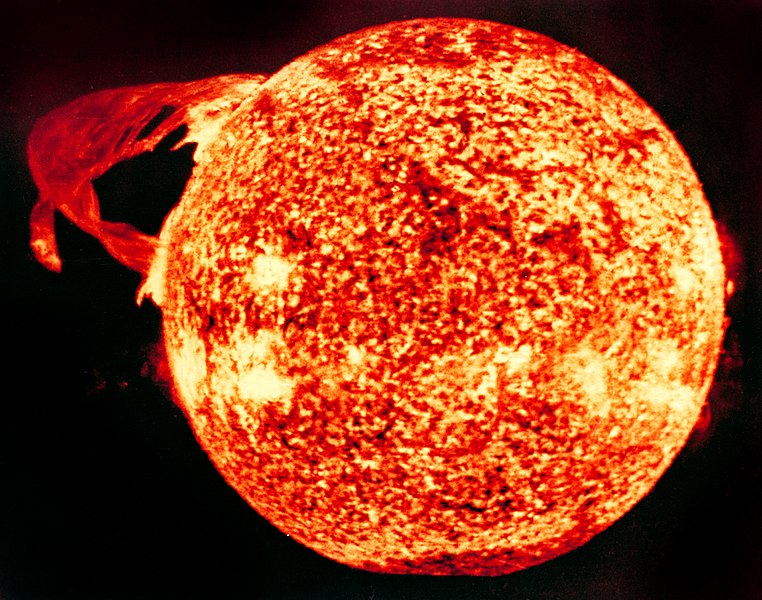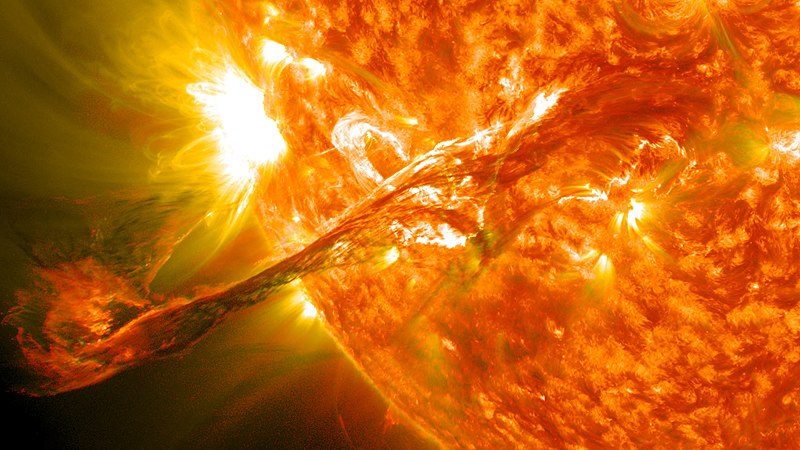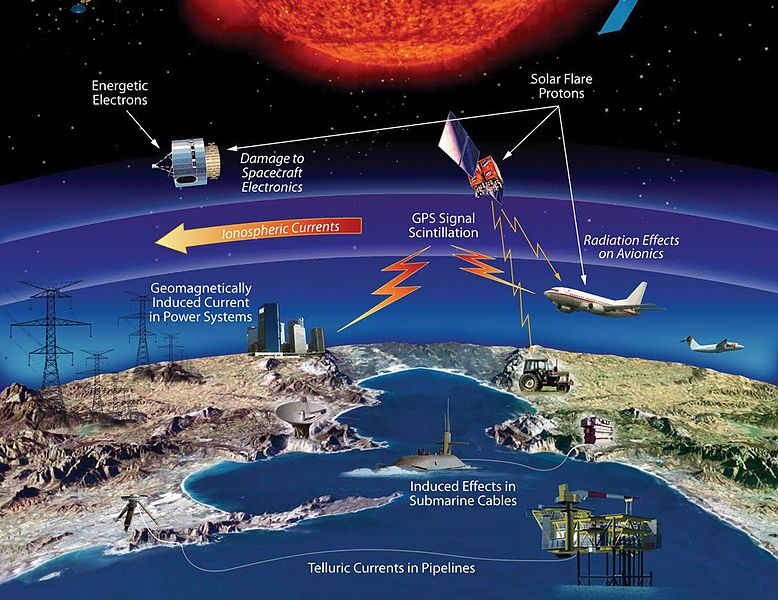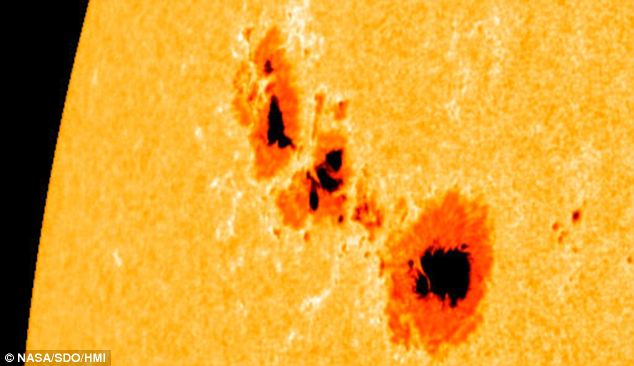WC NASA: What is affected by solar storms The most frequent threat to the human race on a large scale would be a VEI 6+ volcanic eruption, like that of Mount Pinatubo, Philippines in 1991, registered at VEI 6, or Mount St. Helens, USA in 1980, which was a lateral eruption caused by a 5.1 magnitude earthquake. On there own, earthquakes are also a great threat, like those in south-east Turkiye and north-west Syria in 2023, but their area is relatively small compared to the size of the Earth. Less frequent than volcanic eruptions are pandemics. Thankfully we now have the technology to mitigate the effects of such deadly viruses, but a deliberate bio-warfare attack by a terrorist group, employing long term multiple strains, targeted at medical research centres and busy airports, should not be dismissed out of hand. The next major threat is of course global thermonuclear war, made even worse by Russia inserting long term isotopes into its warheads, making fallout lethal for at least 50 years. A nuclear attack on Iran by Israel, and a nuclear attack by the USA on North Korea, are a distinct possibility in the near future, which may cause the governments' of Russia and the PRC to lose their nerve at a time when the taboo against using nuclear weapons has clearly evaporated.
WC Timo Newton-Syms: Northern Lights, Finland The next threat comes from space in a variety of ways. Germs, comets and asteroids have all influenced our evolution over millions of years, but they tend to be infrequent, at least we keep telling ourselves that. There is however one threat from space that appears to be as frequent as once every two hundred years, roughly. It is known as the Miyake event. It occurs when the Sun emits coronal mass ejections and solar flares, usually in quick succession. A weak example of this was the Carrington event of 1859. It occurred as the human race was just starting to employ electricity, mainly for communication via telegraph. The event overloaded the telegraph system, setting fire to telegraph poles. Some telegraph operators were able to send messages to one another, via induced current, whilst their batteries were disconnected. In 1972 another weak event detonated an estimated 4,000 U.S.Navy sea mines in Vietnam during the war. Satellite communication was also disrupted. The US military VELA satellite swarm, designed to detect nuclear explosions, was also triggered worldwide, but fortunately did not lead to a nuclear war. At this time most integrated circuits (ICs) were only being used on the NASA Apollo Moon missions, but there were no astronauts in space at that time. Had there have been, then the mission would have had to be aborted, and the astronauts recalled for medical treatment. So far the human race has been very very lucky.
WC NASA: Sunspots
- Wikipedia: Known Miyake Events
- Wikipedia: Coronal mass ejection
- Wikipedia: Solar flare
- Wikipedia: Carrington Event
- Wikipedia: List of near Earth Solar storms
- Wikipedia: Health threats from Cosmic Rays
- National Library of Medicine: Duration and extent of the great auroral storm of 1859
- Wikipedia: 1972 Solar Storm, including a warning to manned spaceflight, satellites and sea mine laying.
- NASA: Solar attack on Quebec, Canada in 1989
- Live Science: Includes link to original report by Fusa Miyake in 2011
- Royal Society Publishing: Modeling cosmic radiation events....
- Wkipedia: NASA Parker Solar Probe To Sun In 2018
- Wikipedia: NASA Helios Solar Probe To Sun In 1974
- Wikipedia: NASA & ESA SOHO Solar Probe To Sun In 1996 To 2025
- Wikipedia: NASA Solar 'Wind' Probe In Earth's Magnetosphere In 1994
- Wikipedia: NASA Advanced Composition Explorer Solar Wind Probe To Earth's Magnetosphere At L1 In 1997
- Wikipedia: NASA/NOAA Deep Space Climate Observatory, Solar Magnetic Storm Warning At L1 In 2015
- Phys: Scientists discover the highest energy light from the Sun

WC NASA: Solar Flare Imaged From Skylab
Should a Miyake attack occur today in our digital age, the long term repercussions are likely to be horrendous. Even a weak event would probably take out IC's in satellites, space stations and lunar bases, if they had insufficient protection. For example, the JUNO space probe orbiting Jupiter, has a radiation vault encasing its computers and sensors, made of titanium 10mm thick. Each side is one square metre in area. The radiation surrounding Jupiter is if course far higher than what we are likely to be impacted with from the Sun. However, if a weak event can induce an electric current in telegraph lines, it's clear that it can impact home computers and other consumer products. One only has to put a laptop into a microwave oven for a few seconds, to trash the data stored in it. Since the Carrington event, our water supplies have had their gravity feed replaced by electric motors. As with electricity, gas and telecommunications, the water supply is now managed from sophisticated IC based control rooms that have little protection from solar storms. The electricity national grid is a prime candidate for destruction, as seen in the solar attack on Quebec, Canada in 1989. However, most industrial ICs are attached to PCBs (printed circuit boards) which are encased in heavy steel cabinets. It is assumed therefore that most of these systems could be operated from the shop floor.

WC NASA Goddard SFC: Magnificent Coronal Mass Ejection On Sun
Unfortunately, not all Miyake events are weak. One in one thousand year events can be ELEs (Extinction Level Events), as shown in the table in chapter 16...Space Research & UFOs. Such a powerful event can cause nitrogen and oxygen in the atmosphere to combine, resulting in temperatures so low as to drastically reduce agricultural output. Electric motors and generators would be destroyed, effectively returning the human race back to Victorian times. The only trouble is that Victorian technology can't support eight billion people. There would be insufficient horses to replace our road vehicles, whilst lighting our homes with animal oil would be impossible without sailing ships, etc. And where do you find the steam powered machines to make things? Whether or not humans can withstan the radiation, is largely irrelevant, since they would probably die from starvation or assault, as law and order broke down. Examination of tree rings, known as dendrochronology, indicates that these events can last for more than one year. As far as I can tell, whilst there are numerous satellites monitoring the Sun's activity, they are probably doing so simply to work out how interstellar spaceships travel. No government appears to be taking this threat seriously. So what can be done?
.jpg)
WC NASA Goddard SFC: Coronal Rain, Solar Storm
Clearly it would be too expensive to encase our computers in titanium. When it comes to man in space, capsules and bases will be made from material with a high hydrogen content, which has the capability to blot out most of the radiation. Astronauts would also have to take pills regularly to protect them. As for us on planet Earth, it would appear that we either live underground, or design and build biomes that can cover most eventualities, including Miyake events. Previous human civilisations probably survived such events simply because they lived in caves, which afforded them abundant protection, as they lived off sea life existing in nearby shallow waters. At the present time we don't even know what triggers the Sun into creating these huge events. We clearly need a world technocracy now!

Ideas 22...Miyake Events
Ideas 22...Miyake Events

.jpg)
